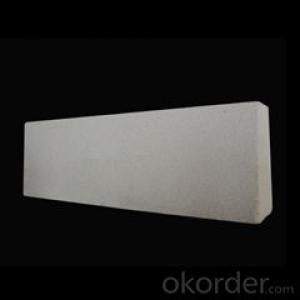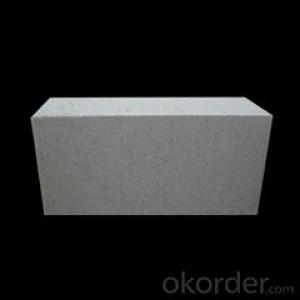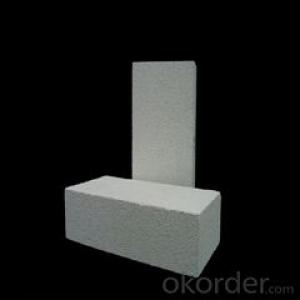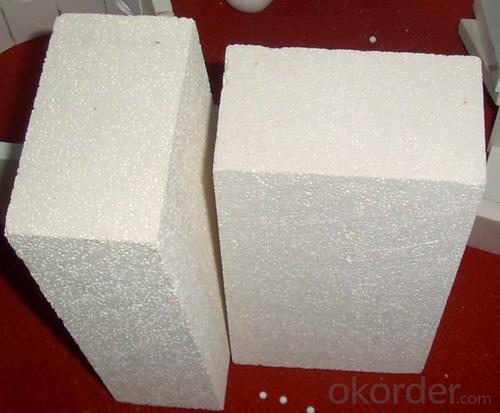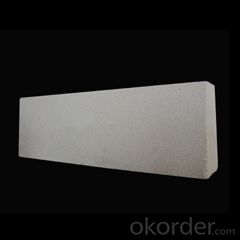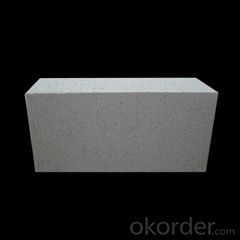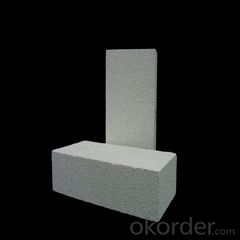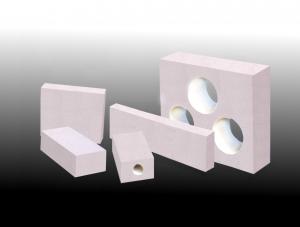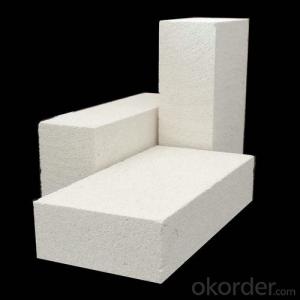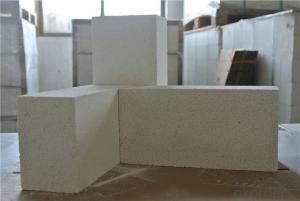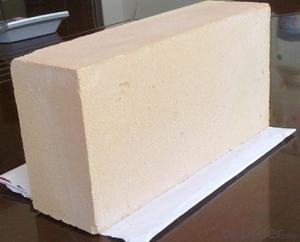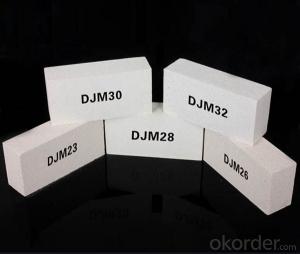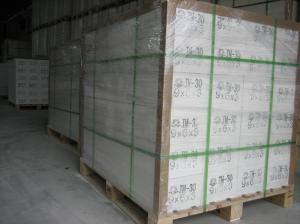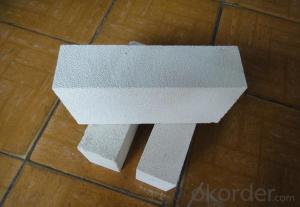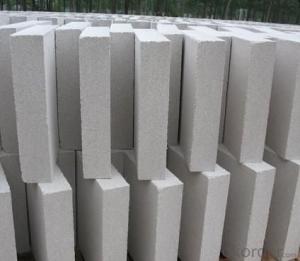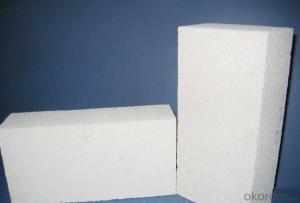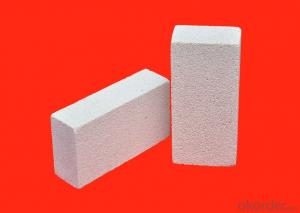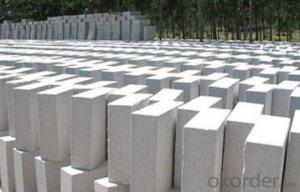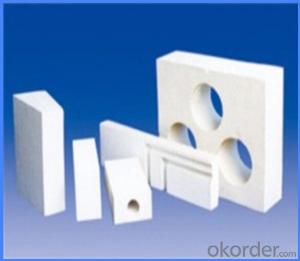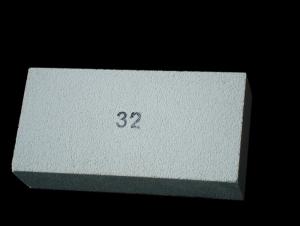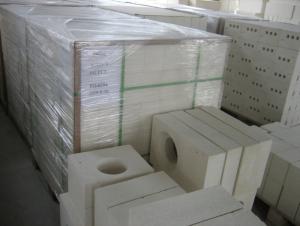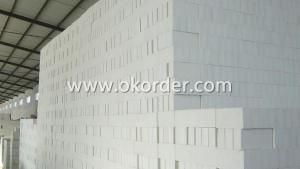Insulating Fire Brick - Refractory Mullite Insulating Refractory Brick JM 89
- Loading Port:
- Shanghai
- Payment Terms:
- TT OR LC
- Min Order Qty:
- 5000 kg
- Supply Capability:
- 10000 kg/month
OKorder Service Pledge
OKorder Financial Service
You Might Also Like
Refractory mullite insulating refractory brick JM 23
Okorder series heat insulation brick
Okorder series thermal insulation brick is an effective, energy saving, low carbon, environmental protection advanced, according to the ASTM standard manufacturing products. Okorder series products are best Li Ning and insulation in all types of industrial furnaces in the metallurgical field, aluminum, petrochemical, electric power and glass ceramic materials. They can be used as part of the working layer of thermal insulation or non - melting. Products have been widely used in the following furnace, achieved satisfactory results.
Application of heat preservation brick
Metallurgical Industry: blast furnace, hot blast furnace, heating furnace, etc..
Petrochemical Industry: ethylene cracking furnace, hydrogen production furnace, primary reformer, heating furnace, etc..
Ceramic industry: roller kiln, kiln, etc..
Glass industry: glass furnace regenerator, etc.
Carbon industry: carbon furnace, etc..
Aluminum electrolysis industry: aluminum reduction cell, etc.
Other industries: tunnel kiln, shuttle kiln, etc..
Advantages of heat insulation brick
Low thermal conductivity: more porosity will bring good thermal insulation effect, energy saving.
High crushing strength: high crushing strength, volume stability.
Low heat storage: small heat storage to absorb more heat, energy-saving effect is obvious.
Gao Chundu: iron, alkali metal impurity content is low.
The precise size: Brick size processing precision, special shape cutting and grinding, accelerate the brickwork.
Insulating brick picture
Common problem solutions
1. What products do you have?
We have all kinds of refractory bricks, refractory casting materials, mortar, cement, ceramic fiber products, etc..
Or you can browse our products to choose what you need.
2. How to control product quality?
With strict quality control system throughout the material selection and production process, we have the quality of refractory materials and ceramic fiber products to meet customer requirements.
From the selection of raw materials, the quality of our control to start. The quality certificate of the raw material is required, each batch of the products are to be tested in the use of the forward line. In the production process, the quality control by the workers, and then each piece of classification, and through the quality supervision and inspection.
3. Can you give me a brief introduction to the application of your product?
My company is mainly engaged in refractories in the steel, cement, glass, ceramics, petrochemical, electric power and other industries.
4. What information do you need if I need you?
In order to select the right products, we will provide us with information, such as the United States, technical data, order quantity, product application, etc..
If you have any questions, please contact us.


- Q: Can insulating fire bricks be used in the insulation of walls and roofs?
- No, insulating fire bricks are typically not used in the insulation of walls and roofs. They are primarily designed for high-temperature applications such as lining kilns, furnaces, and fireplaces. Other types of insulation materials such as fiberglass, foam, or cellulose are more commonly used for wall and roof insulation due to their better thermal properties and lower cost.
- Q: Can insulating fire bricks be used in the construction of lime production ovens?
- Indeed, the utilization of insulating fire bricks is feasible when constructing lime production ovens. These fire bricks are engineered with the explicit purpose of enduring elevated temperatures and offering optimal thermal insulation. The fabrication of lime necessitates materials capable of enduring the intense heat generated while converting limestone into lime. Insulating fire bricks possess not only exceptional heat resistance, but they also exhibit minimal thermal conductivity, thus reducing heat dissipation and enhancing energy efficiency throughout the lime production procedure. Moreover, these fire bricks are lightweight and effortlessly manageable, rendering them suitable for the construction of lime production ovens.
- Q: Can insulating fire bricks be used as a heat shield?
- Insulating fire bricks can serve as an effective heat shield due to their excellent thermal insulation properties. These bricks are specifically designed to block and reflect heat, making them suitable for applications where heat containment or redirection is necessary. Fireplaces, kilns, furnaces, and industrial ovens commonly utilize insulating fire bricks to manage heat. By reducing heat transfer, these bricks create a protective barrier between the intense heat source and the surrounding environment. Moreover, their high melting points and ability to withstand high temperatures make them ideal for use as heat shields. However, it should be noted that the effectiveness of insulating fire bricks as a heat shield may vary depending on the specific requirements and conditions of the application.
- Q: Are insulating fire bricks resistant to fluorine gas?
- Typically, insulating fire bricks do not possess resistance against fluorine gas. Known for its high reactivity and corrosiveness, fluorine gas has the capability to react with diverse substances, including insulating fire bricks. The corrosive properties of fluorine gas may result in structural and integrity harm to the fire bricks, eventually leading to their degradation or malfunction. Hence, it is recommended to opt for an alternative refractory material that is specifically engineered to endure the corrosive impact of fluorine gas, in case it is needed for a specific application.
- Q: Can insulating fire bricks be used in cryogenic applications?
- Insulating fire bricks, also known as refractory bricks, are primarily designed for high-temperature applications and are commonly used in furnaces and kilns. However, when it comes to cryogenic applications, where extremely low temperatures are involved, insulating fire bricks may not be the most suitable choice. Cryogenic temperatures, typically below -150 degrees Celsius (-238 degrees Fahrenheit), pose unique challenges for materials due to the severe thermal stresses they experience. Insulating fire bricks are typically composed of materials such as alumina and silica, which have limited thermal shock resistance and can become brittle at very low temperatures. This brittleness can lead to cracking and failure when exposed to cryogenic conditions. Additionally, insulating fire bricks have relatively high thermal conductivity, which means they can conduct heat relatively well. In cryogenic applications, where minimizing heat transfer is crucial, materials with lower thermal conductivity are preferred. Therefore, insulating fire bricks, with their higher thermal conductivity, may not be the most efficient choice for cryogenic applications. Instead, materials with excellent thermal insulation properties and low thermal conductivity, such as aerogels or foams made from materials like silica or carbon, are often preferred for cryogenic applications. These materials offer superior thermal insulation and better resistance to extreme temperatures, ensuring the efficient and reliable performance required in cryogenic environments. In summary, while insulating fire bricks are suitable for high-temperature applications, they may not be the best choice for cryogenic applications due to their brittleness at low temperatures and relatively high thermal conductivity. Materials specifically designed for cryogenic conditions, such as aerogels or foams, are more suitable for these extreme temperature environments.
- Q: Do insulating fire bricks require any special fireproofing treatments?
- There is no need for any special fireproofing treatments for insulating fire bricks. Insulating fire bricks are composed of lightweight materials that possess excellent insulation properties, such as refractory clay or ceramic fibers. These materials possess inherent fire resistance and can endure high temperatures without requiring extra fireproofing treatments. Nevertheless, it is crucial to guarantee the correct installation and utilization of insulating fire bricks in order to enhance their efficiency and lifespan.
- Q: Are insulating fire bricks resistant to thermal stress?
- Yes, insulating fire bricks are designed to be highly resistant to thermal stress. They can withstand high temperatures without cracking or breaking, making them ideal for applications where thermal insulation and durability are required.
- Q: Are insulating fire bricks resistant to fire damage?
- Insulating fire bricks have been specially crafted to endure fire damage. Their composition consists of unique refractory materials, enabling them to withstand exceedingly high temperatures without warping or compromising their insulation capabilities. Possessing a high melting point and low thermal conductivity, these bricks effectively insulate against heat transfer and safeguard against fire harm. Their utilization is widespread in scenarios demanding exposure to fire and elevated temperatures, including furnaces, kilns, fireplaces, and industrial procedures. In summary, insulating fire bricks exhibit reliability and durability, delivering exemplary defense against fire damage.
- Q: Do insulating fire bricks have good mechanical strength?
- Compared to regular fire bricks, insulating fire bricks typically possess moderate mechanical strength. Although their primary function is to offer exceptional thermal insulation, they can still endure a certain degree of mechanical strain. Nevertheless, it is crucial to acknowledge that their mechanical strength might not be as robust as other fire brick variants explicitly engineered to withstand heavier loads and abrasion. Consequently, if the objective is to attain both high insulation and superior mechanical strength, contemplating the utilization of a blend of insulating fire bricks and regular fire bricks could be necessary.
- Q: Can insulating fire bricks be used in waste incineration plants?
- Yes, insulating fire bricks can be used in waste incineration plants. These bricks are designed to withstand high temperatures, making them suitable for lining the combustion chambers and other areas where intense heat is generated in waste incinerators. Additionally, their insulating properties help to reduce heat loss and increase energy efficiency in the incineration process.
Send your message to us
Insulating Fire Brick - Refractory Mullite Insulating Refractory Brick JM 89
- Loading Port:
- Shanghai
- Payment Terms:
- TT OR LC
- Min Order Qty:
- 5000 kg
- Supply Capability:
- 10000 kg/month
OKorder Service Pledge
OKorder Financial Service
Similar products
Hot products
Hot Searches
Related keywords

